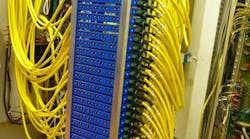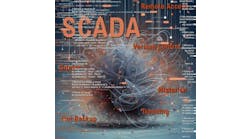Imagine being able to wire, test and commission your control system while the plant is running, then complete the swingover at the press of a button.
The Tempus solution uses a specialized temporary tool that makes it possible to wire from one control system to another, without disrupting the signals. During the migration, both control systems see the same information, which allows online commissioning, testing, and swingover.
“The Tempus hardware allows us to migrate the physical wiring between control system platforms by replicating the original I/O signals to both systems, so there’s no need to shut down,” says David Findlay, P.Tech. (Eng.), automation lead and partner, CIMA+. “It’s a tool we use in the Tempus process, which is part of our control system migration services.”
“You can engineer a way on paper to migrate one point at a time, but logistically, the implementation risks are significant,” says Findlay. We saw this on many projects including our own which was the incentive for developing the Tempus product.”
As part of the Tempus process the module duplicates the signals from the field wiring to both the old and new systems. During the migration, operators will see both the old and new HMI graphics allowing a side by side comparison. “At this point you can test the I/O, programming, logic, and graphics,” Findlay says. Once all your inputs are the same and the programming is the same, then your outputs from both systems will be the same allowing the swingover to be seamless. If there are discrepancies in these values, at this stage is where you would troubleshoot instead of in the old traditional style, during startup.
[javascriptSnippet]
“When all checks are complete, press a button and the new system takes over with all I/O visible on both systems with zero latency. This action is reversible to return control to the old system at any time” Findlay says. “In a traditional migration, once you start pulling wires off the terminal strips, there’s no going back,” Findlay adds.
All conventional types of signals are supported, and each Tempus module handles one signal with many modules working together at the same time. The number of modules utilized at once is a function of how the full control system is separated into sub-systems.
“For example, at a client’s site with Tempus we upgraded several heat exchangers one at a time as separate sub-systems” Findlay says. “You can do a 10,000-loop system in segments, there’s no physical limit to how many modules can be used at any time.”
“Simply put, Tempus is a game changer, downtime equates to lost production and revenue, and a conventional migration could take days, weeks, or even months. Tempus is a risk mitigation process that completely and safely eliminates downtime for migrations by revolutionizing how control systems are replaced”.
For more information, visit www.cima.ca/tempus.




